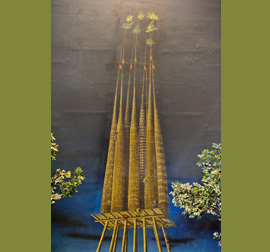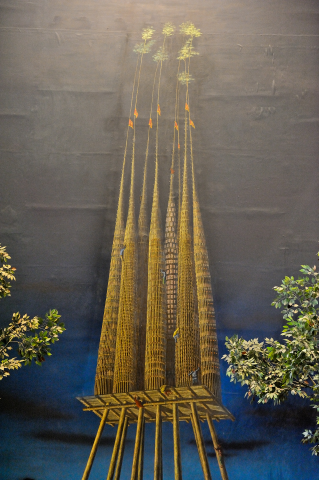:::
Ghost Pole
After the Han Chinese arrived in Taiwan, they were frequently killed by natural disasters, manmade calamities or diseases, and thus it was customary to hold pudu during the seventh month of the Chinese lunar calendar to console the spirits of those who had perished. There are two schools of thought about ghost pole climbing; one suggests that the ritual is held to fight over sacrificial offerings with ghosts and spirits, the other that it is used to scare ghosts that have not yet returned to the underworld. The ghost pole climbing event in Yilan is a held before the conclusion of the pudu. After the pudu, the ghosts are supposed to return to where they came from, and thus the massive crowd at the ghost pole climbing ceremony is intended to scare the ghosts away and cast them back to the underworld.
Ghost pole climbing requires building a 10m tall “ghost pole” with a platform on top. The platform is piled with sacrificial offerings and flags, while the ghost pole is covered in grease, making it extremely difficult to climb, and leading to frequent accidents. The most famous “ghost pole climbing” events are the ones held in Toucheng, Yilan and Hengchun, Pingtung.
According to legend, the “ghost pole climbing” ceremony in Toucheng began in the years of Emperor Daoguang, and it remains the largest such ceremony still held in various locations in Taiwan, where it takes place at midnight on the last day of the seventh month of the lunar calendar. In 1991, the event resumed in Toucheng, Yilan, with the rules of the competition being improved, thus making the most competitive folk event in Taiwan. In this, the team that snatches the Shunfeng Flag at the top the pole is the winner.









